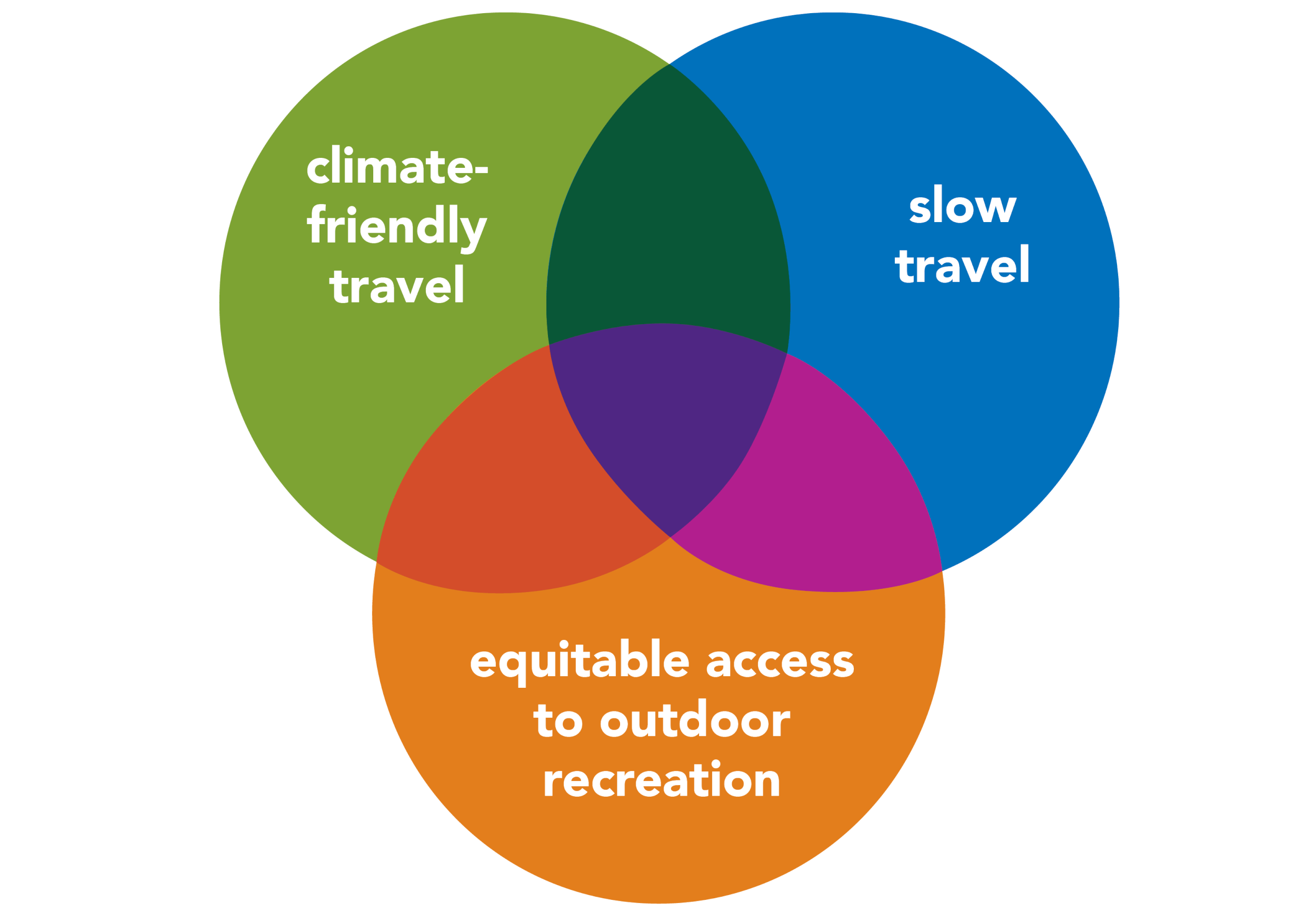Slow Travel
Time in nature is fundamental to human well-being
the journey is the destination
Slow travel is an intentional way of moving in the world
...
Slow travel is an intentional way of moving in the world ...
Slow travel is the experience of moving your body from one place to another and the attention you bring to your body and the environment as you travel.
Trip duration is less important than mindful attention to where you are and a willingness to embrace what you find there.
Three types of slow travel
Focus on transportation type and the relative slowness of how you get somewhere. See climate-friendly travel below.
Focus on “living somewhere else,” appreciating the local culture and place with opportunity for spontaneity, side trips, white space, interaction with locals, etc. Loose plans, minimal plans, or no plans.
Focus on micro-travel and mindfulness. What you experience outdoors when close to home, usually walking or your most accessible means of getting out. Sitting on a park bench, paying attention to the sensations of weather on your skin.
slow travel
How you get somewhere matters to your body, spirit and the planet.
Bicycle. Walk. Hike. Run. Transit. Bus. Train. Paddle. Ski. Snowshoe. Ferry.
Generally, trips occur closer to home, take more time, have small group sizes, and are undertaken by more able-bodied people.
climate-friendly travel
equitable access to outdoor recreation
Each of us inhabits a body with unique abilities and characteristics that was and is shaped by the environment in which we live. The many factors that comprise our identity may create barriers - whether physical, social or psychological - to access outdoor recreation.
Income. Ability. Time. Race. Gender. Age. Family or group size. Transportation. Personal safety. Distance. Sexual identity. Body size.
For a more details about slow travel,
check out my post,
Wander and Wonder, a Venn diagram.


